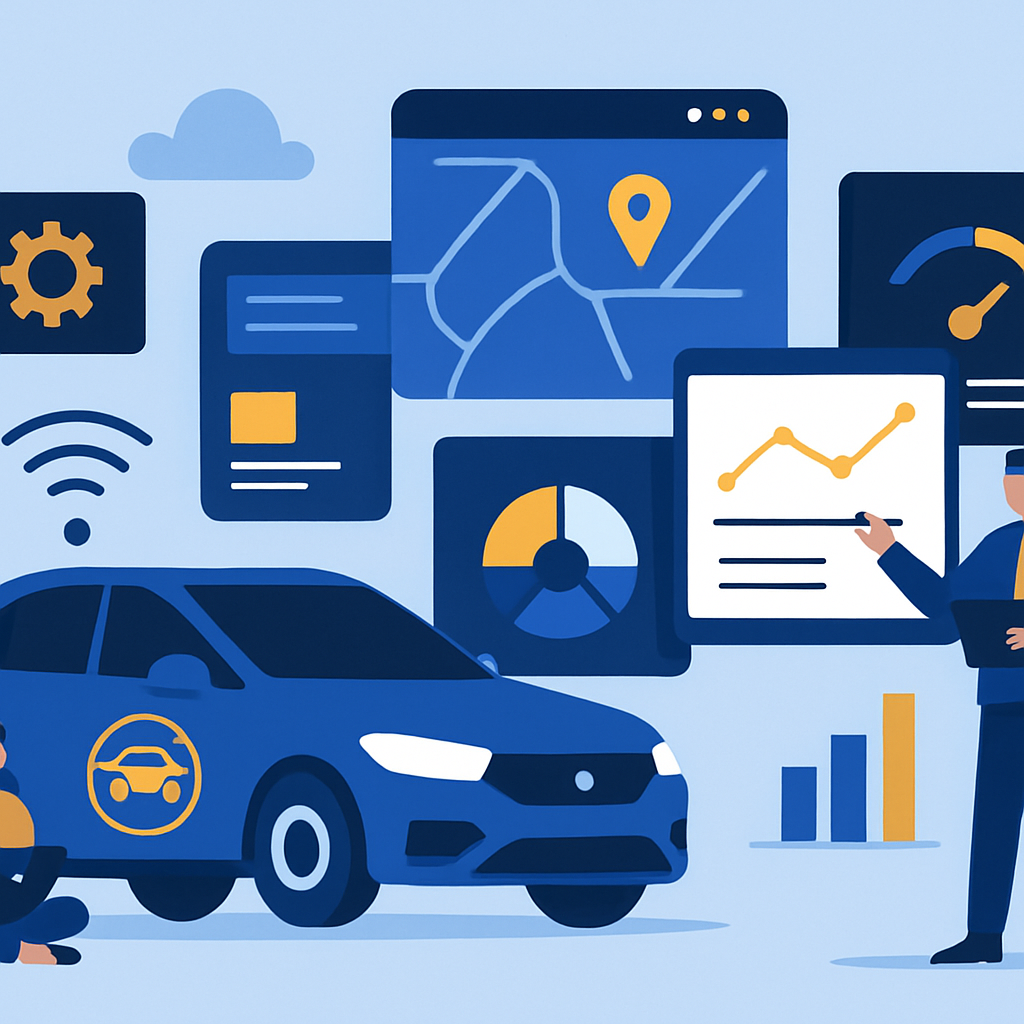
Driving the Future: How Connected Vehicle Platforms Transform the Automotive Industry
As the automotive industry undergoes rapid digital transformation, connected vehicle platforms have emerged as a pivotal technology. These platforms integrate IoT, AI, and cloud services to create vehicles that can communicate, analyze, and act in real time. For C-level executives and IT decision-makers, understanding the strategic potential of connected vehicle ecosystems is essential to staying ahead of competitors and meeting evolving customer expectations.
The Strategic Imperative for Connected Vehicle Platforms
Connected vehicle platforms enable real-time communication between vehicles, infrastructure, and cloud-based services. This capability goes beyond navigation and infotainment—it supports predictive maintenance, advanced safety features, and personalized driver experiences. By harnessing these capabilities, automotive manufacturers and fleet operators can create new revenue streams, improve operational efficiency, and enhance customer loyalty.
Key Components of a Connected Vehicle Ecosystem
- IoT Sensors: Gather data on vehicle performance, environment, and driver behavior.
- AI Algorithms: Analyze data for predictive maintenance, route optimization, and safety alerts.
- Cloud Connectivity: Enables seamless integration with enterprise systems and external services.
- Cybersecurity: Protects data integrity and vehicle systems from malicious threats.
Integrating these components requires robust digital transformation strategies, ensuring that technology investments align with business goals and deliver measurable ROI.
Actionable Insights for Executives and IT Leaders
1. Prioritize Data Governance
Data from connected vehicles is valuable but sensitive. Establishing strong AI governance frameworks ensures compliance with data privacy regulations and ethical AI practices. This includes defining data ownership, implementing consent mechanisms, and instituting audit trails.
2. Leverage AI for Real-Time Decision Making
AI-powered analytics can transform raw vehicle data into actionable insights. For example, predictive maintenance algorithms can anticipate component failures before they occur, reducing downtime and repair costs. Implementing AI solutions that integrate seamlessly with your existing infrastructure is key to maximizing value.
3. Enhance Cybersecurity Measures
Connected vehicles expand the attack surface for cyber threats. Deploy comprehensive security services to safeguard communication channels, onboard systems, and cloud integrations. Security should be embedded from the design phase to mitigate risks proactively.
4. Integrate with Industry-Specific Solutions
For automotive manufacturers, tailored automotive solutions can accelerate deployment, ensuring compatibility with industry standards and regulatory requirements. Cross-industry integration, such as energy sector partnerships for EV charging infrastructure, can further enhance platform capabilities.
Business Benefits of Connected Vehicle Platforms
- Operational Efficiency: Automated diagnostics and fleet management reduce costs and improve uptime.
- Customer Experience: Personalized services and proactive maintenance enhance satisfaction.
- Revenue Generation: Data-driven services, subscription models, and partnerships create new income streams.
- Regulatory Compliance: Real-time monitoring supports adherence to emissions and safety regulations.
Implementation Roadmap
- Assess Readiness: Use tools like the Digital Transformation ROI Calculator to evaluate potential returns.
- Define Objectives: Align connected vehicle initiatives with strategic business goals.
- Choose Technology Partners: Select vendors with proven expertise in IoT, AI, and cloud integration.
- Deploy Incrementally: Start with pilot programs to validate technology and processes.
- Scale Securely: Ensure robust governance and security frameworks before expanding fleet-wide.
Conclusion
Connected vehicle platforms are more than a technological upgrade—they are a strategic enabler for the future of mobility. By combining IoT, AI, and cloud technologies with strong governance and security, organizations can unlock transformative benefits. Executives who act decisively now will position their businesses at the forefront of the automotive industry's digital evolution.
To explore how your organization can harness connected vehicle technology, learn more about our AI solutions and digital transformation services.


